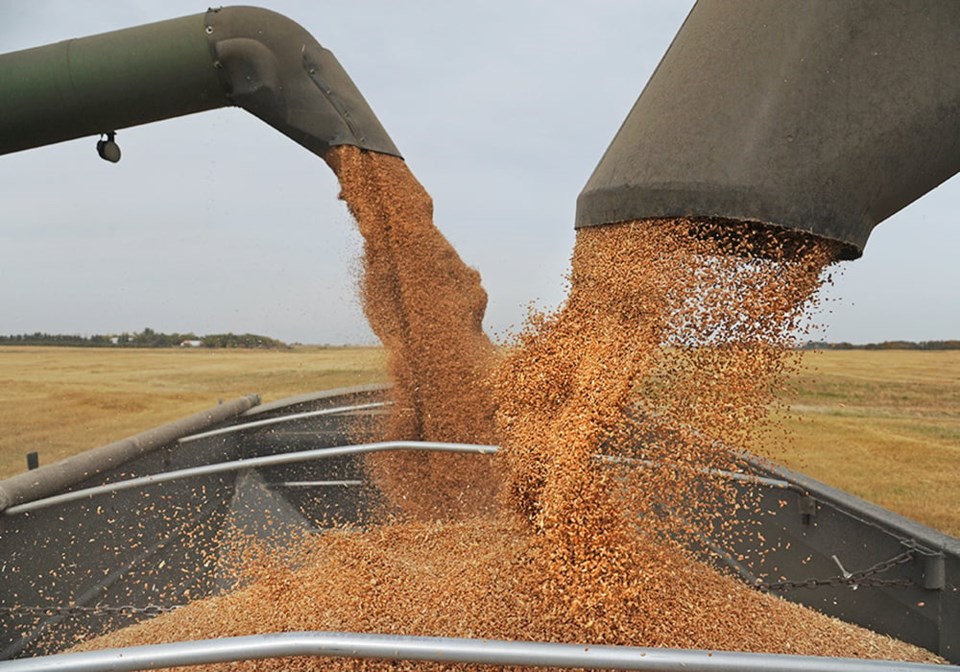WESTERN PRODUCER — Canadian wheat is making inroads in a variety of Asian markets as Ukraine’s presence abates, according to a Ukrainian brokerage firm.
Ukraine exported 8.4 million tonnes of the cereal crop through the first half of 2022-23 versus 15.9 million tonnes for the same period one year ago, according to an analysis by Christina Serebryakova, head of analytics at Atria Brokers.
In an opinion piece published on APK-Inform, she said the country is having difficulty competing with other exporters due to “extremely difficult logistics.”
Those logistical problems are not getting any better with Russia threatening to scuttle the United Nations-brokered grain corridor agreement that expires on May 18.
Meanwhile, the European Union is preparing emergency measures to ban Ukrainian grain imports into Poland, Hungary, Slovakia, Romania and Bulgaria. Farmers in those countries are fed up with the price-damping effect of the flood of Ukrainian grain pouring across their borders.
Canada’s market share is growing in a variety of Asian markets as Ukraine’s recedes.
“Ukraine dominated the Indonesian market before the war, but now our share here is insignificant,” Serebryakova said in her opinion piece.
Ukraine shipped 345,600 tonnes of wheat to that market during the first half of 2022-23, down from 2.7 million tonnes for the same period one year ago.
Indonesia instead purchased 2.45 million tonnes from Australia, a 46 percent increase from year-ago levels, and 861,000 tonnes from Canada, a 66 percent jump, according to Serebryakova.
The Canadian Grain Commission’s numbers are slightly different. They show that Indonesia imported 1.05 million tonnes of Canadian wheat during the first six months of 2022-23, up from 709,300 tonnes for the same period one year earlier.
That places Indonesia as Canada’s second biggest customer this year, behind China’s 2.15 million tonnes.
Bangladesh has been Canada’s third biggest customer at one million tonnes, up from 404,900 tonnes the previous year.
Serebryakova said Ukraine’s sales to that market have fallen to 324,000 tonnes for the first six months of 2022-23, down from 632,000 tonnes for the same period one year ago.
Leif Carlson, director of market intelligence and trade policy with Cereals Canada, said it is incorrect to draw the conclusion that Canada is directly benefiting from the absence of Ukraine in those markets.
“Rather, we’re seeing a rebound in Canadian demand based on the larger production in 2022 and the fact that the Canadian quality profile is really good this year,” he said.
Canadian farmers harvested an estimated 28.38 million tonnes of non-durum wheat in 2022, a 46 percent improvement over the previous drought year.
He noted that Canada sells Hard Red Spring Wheat (HRSW) in many markets in Asia, which competes in a different area of the quality spectrum than Ukraine’s winter wheat. In fact, the two types of wheat are complementary and are often blended.
Australian Prime Hard wheat had some quality issues this year, which has increased demand for Canadian and U.S. HRSW in Asian markets.
“The Canadian wheat export pace has been very good,” said Carlson.
“We made it through the winter without any significant shipping disruptions.”
Agriculture Canada has been increasing its 2022-23 Canadian non-durum wheat export estimate in nearly every monthly report that it publishes.
The latest forecast calls for 19.6 million tonnes of exports, up from its September 2022 estimate of 18.2 million tonnes.
International customers have told Cereals Canada that they are thankful for Canada’s reliable supply of top-quality wheat in a turbulent year like this one.
“One of the messages we’ve heard this year is, can Canada grow more wheat?” said Carlson.
It appears the answer to that question is a resounding yes. Farmers told Statistics Canada that they intend to plant 19.4 million acres of spring wheat, a 7.5 percent increase over last year.
Total wheat plantings including durum and winter wheat are forecast at 27 million acres, the biggest crop since 2001.
“Wheat has remained a competitive option,” said Carlson.
In the meantime, Ukraine is looking at another lackluster crop.
Citi Research is forecasting that the country will harvest 16.5 million tonnes of wheat in 2023, which would be half of what was grown in 2021 before the war began, according to a CNBC article.
The firm is forecasting 27 to 30 million tonnes of corn and wheat exports, a 15 to 18 million tonne drop from 2021-22 levels.
Contact [email protected]



